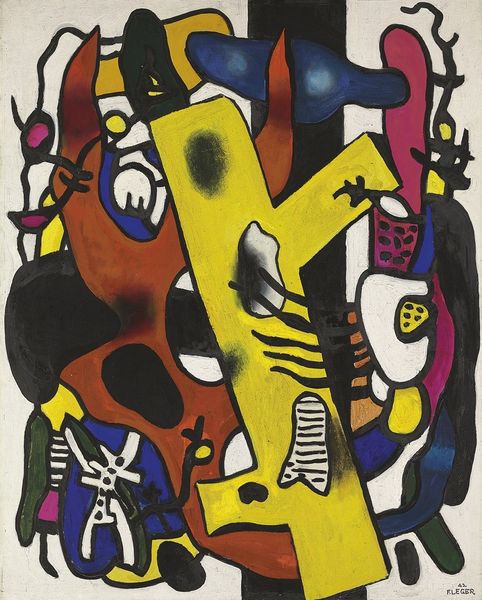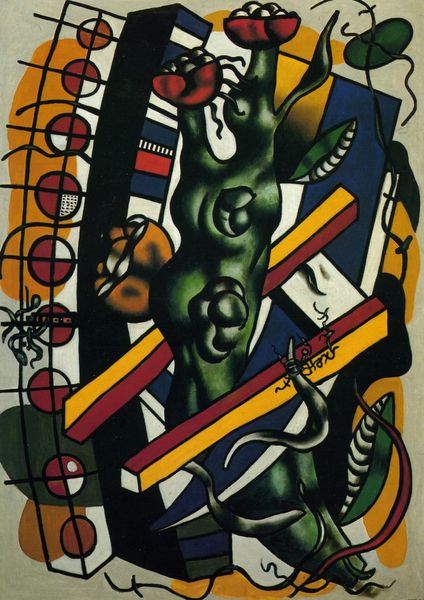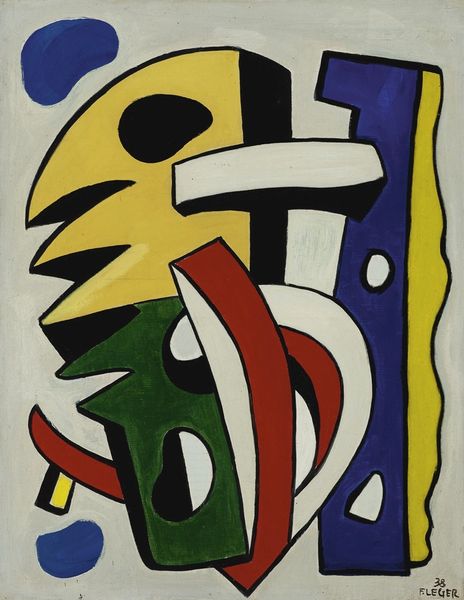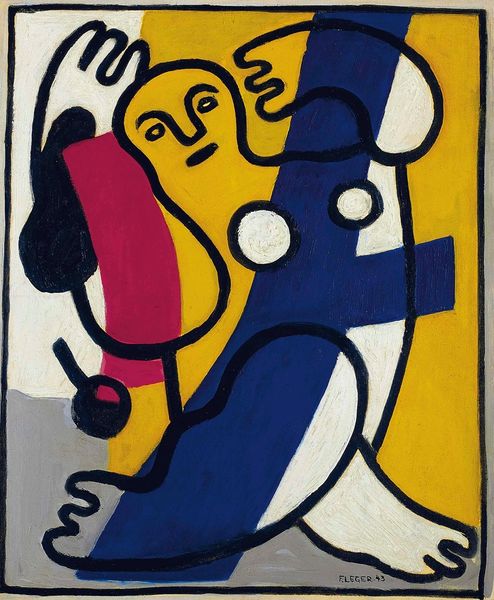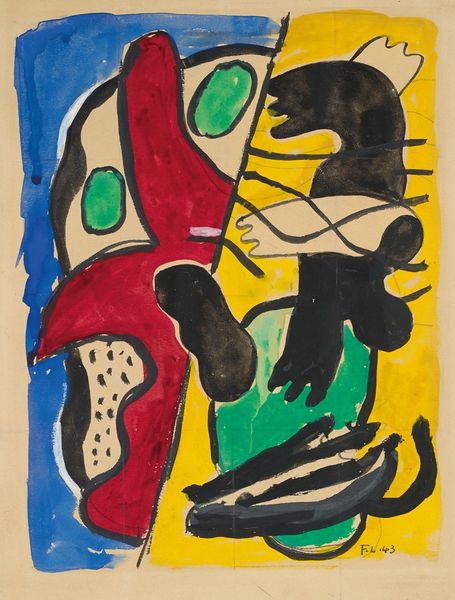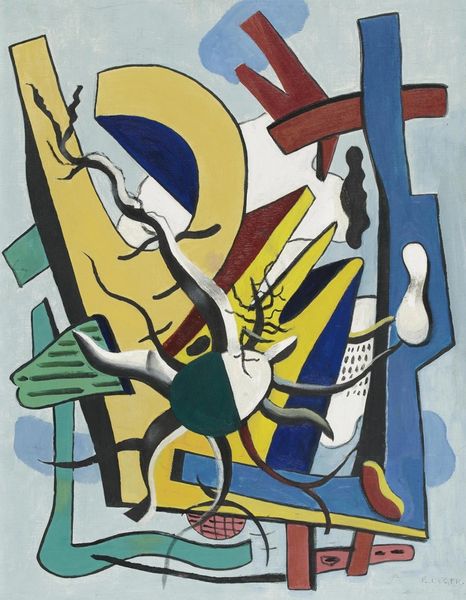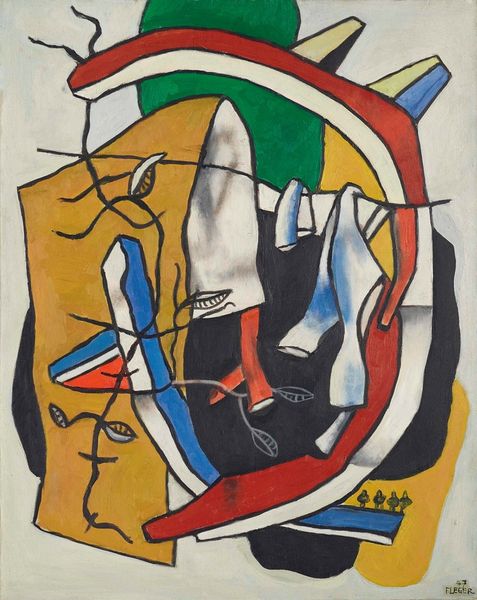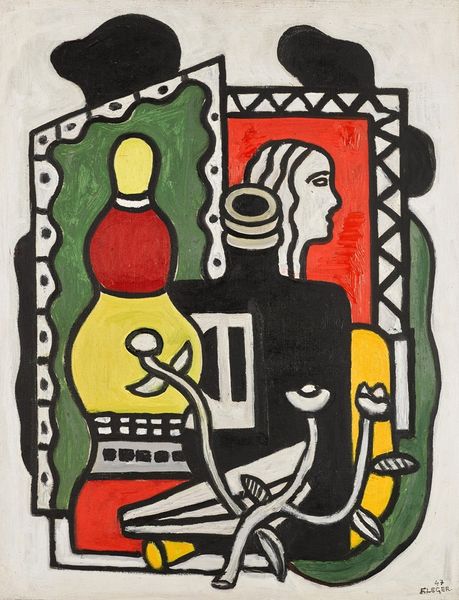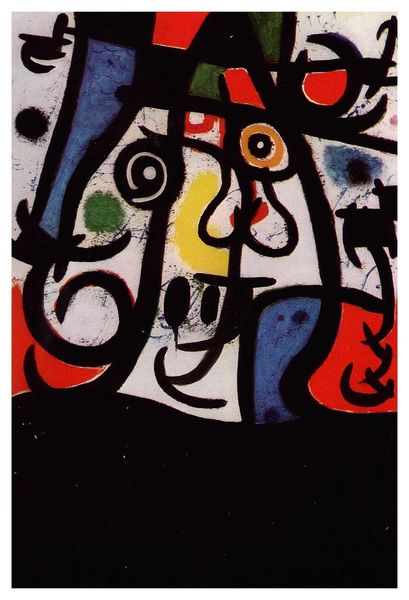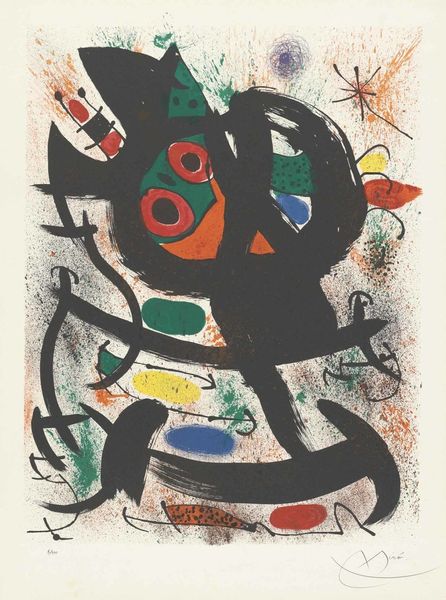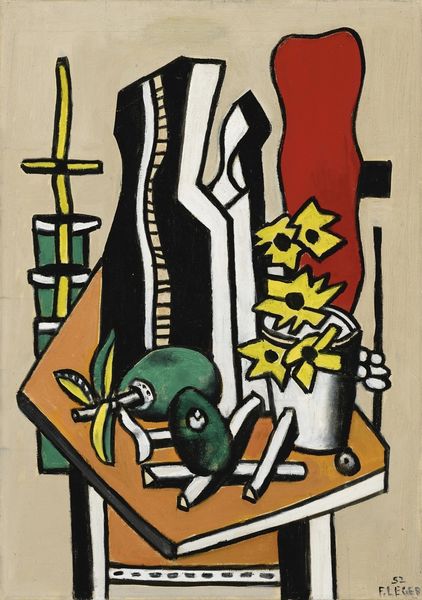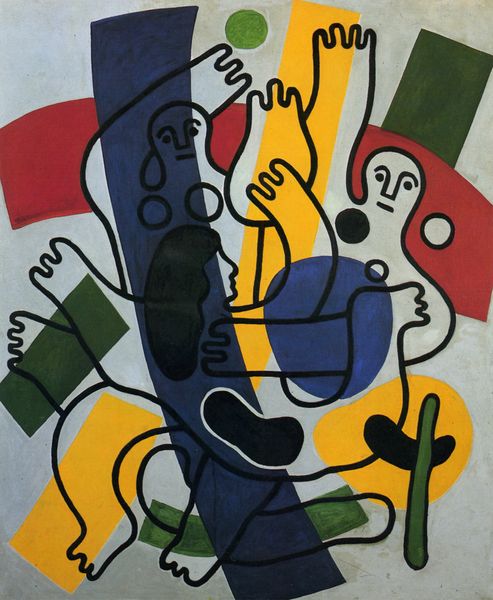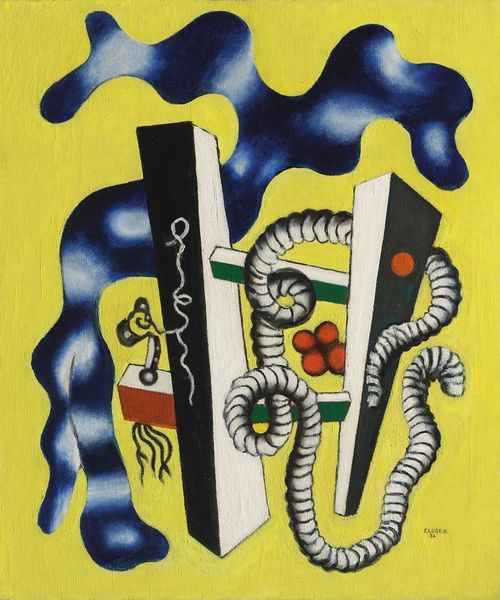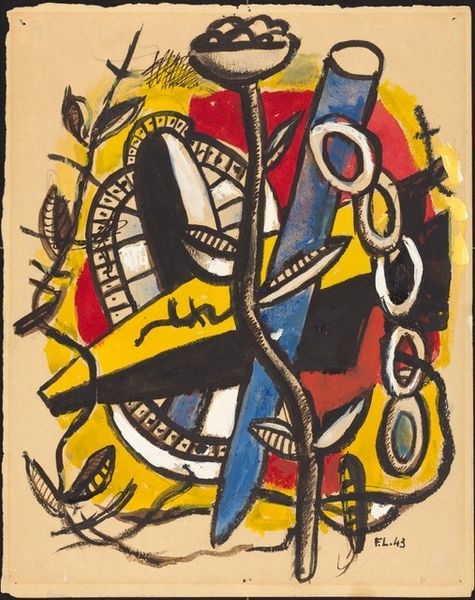
Copyright: Modern Artists: Artvee
Editor: This is Fernand Léger’s "China Town," painted in 1943, using acrylic paint. It's certainly a jumble of geometric shapes and colours that coalesce into…something. What jumps out at you when you look at it? Curator: Given its wartime creation, it's critical to consider Léger's position as a European artist living in exile in America. This work reveals much about Léger's assimilation of American industrialism and its urban environment through specific artistic labor. He abandoned his earlier mechanomorphic style. The flat planes of colour, boldly outlined, simulate mass-produced posters and commercial signs, wouldn't you agree? Editor: I see what you mean about the colours, that's insightful. But “China Town”--was he trying to capture a sense of place, or is he making a comment on something? Curator: Léger, in engaging with the urban landscape, shifted the artist's role. By deliberately choosing acrylic—a newer, industrially produced medium—he challenges the established hierarchy of "fine art" painting. Also consider how the labour-intensive techniques employed in traditional easel painting are deemphasized through the flat, simplified shapes and lines and hard edges. What do you think he is challenging about traditional artistic labour in its consumption by American society? Editor: I never considered that art materials are tools connected to artistic labor itself! Thinking about Léger as a European making sense of America through his artistic practice gives a whole new level of context. Curator: Precisely. His 'China Town' highlights how artists integrate with society. Hopefully we now understand how production informs artistic creation and reception.
Comments
No comments
Be the first to comment and join the conversation on the ultimate creative platform.
